Whirlpool AKR 703 IX Handleiding
Bekijk gratis de handleiding van Whirlpool AKR 703 IX (4 pagina’s), behorend tot de categorie Afzuigkap. Deze gids werd als nuttig beoordeeld door 78 mensen en kreeg gemiddeld 4.3 sterren uit 39.5 reviews. Heb je een vraag over Whirlpool AKR 703 IX of wil je andere gebruikers van dit product iets vragen? Stel een vraag
Pagina 1/4

5019 318 33292
SAFEGUARDING THE ENVIRONMENT
1. Packing
Packing materials are 100% recyclable and are marked with the
recycling symbol .Comply with the local regulations for
disposal. The packing materials (plastic bags, polystyrene, etc.)
are a potential source of danger and must be kept out of the
reach of children.
2. Product
This appliance is marked in compliance with European Directive
2002/96/EC, Waste Electrical and Electronic Equipment (WEEE).
By ensuring that this appliance is correctly scrapped, the user can
help prevent potentially harmful consequences for the
environment and the health of people.
The symbol on the product or the accompanying
documentation indicates that this product should not be treated
as domestic waste but must be taken to a suitable collection
centre for the recycling of electrical and electronic equipment.
Disposal must be carried out in compliance with local regulations
on waste disposal.
For further information on the treatment, recovery and recycling
of this product, contact the competent local office, the
household waste collection service or the shop where you
purchased the appliance.
IMPORTANT INSTRUCTIONS FOR
SAFETY
WARNING: To reduce the risk of accidents, electric shock,
injury or damage, when using the hood comply with the basic
precautions, including the following.
1. Always disconnect the hood from the power supply before
carrying out any installation or maintenance operation on the
appliance.
2. Installation must be carried out by a specialised technician, in
compliance with the manufacturer’s instructions and local
safety regulations.
3. Earthing of the appliance is compulsory. (Not possible for
Class II hoods).
4. Never use multisockets and extension leads.
5. The electrical components must no longer be accessible to
the user after installation.
6. Do not touch the hood with wet parts of the body or use it
when barefoot.
7. Do not pull the appliance power cable to unplug it.
8. After-sales service – do not repair or replace any part of the
hood unless specifically indicated in the manual. All other
maintenance services must be carried out by a specialised
technician.
9. When drilling the wall, make sure not to damage the
electrical connections and/or pipes.
10. The ventilation ducts must always discharge to the outside.
11. The Manufacturer declines any liability for improper use or
incorrect setting of the controls.
12. The appliance is not intended for use by children or persons
with limited physical, sensory or mental abilities or without
experience and knowledge of it, unless they are under the
supervision of or instructed in its use by a person responsible
for their safety.
13. Keep children away.
14. To reduce the risk of fire, only use a metal inlet duct.
15. Children must be supervised so that they do not play with
the appliance.
16. The product must be disposed of in compliance with local
regulations on waste disposal.
17. For further information on the treatment, recovery and
recycling of this product, contact the competent local office,
the household waste collection service or the shop where
you purchased the appliance.
18. Regular cleaning and maintenance is essential for correct
hood operation and good performance. Frequently clean all
encrustations from dirty surfaces to prevent the
accumulation of grease. Regularly clean or replace filters.
19. Do not “flambé” food under the hood. Naked flames could
cause a fire.
20. The room must have adequate ventilation when the hood is
used at the same time as appliances operating on gas or
other fuels.
21. The discharge air must not be eliminated in a duct used to
remove fumes produced by appliances operating on gas or
other fuels, but must have a separate outlet. All the national
regulations on air discharge envisaged by art. 7.12.1 of CEI
EN 60335-2-31 must be observed.
22. If the hood is used together with other appliances operating
on gas or other fuels, the negative pressure in the room
must not exceed 4 Pa (4 x 10-5 bar). Therefore, make sure
the room is adequately ventilated.
23. Do not leave pans unattended when frying, since the cooking
oil could catch fire.
24. Make sure the lamps are cold before touching them.
25. The hood is not a shelf, therefore do not overload or place
objects on it.
26. Do not use or leave the hood without its lamps correctly
installed - risk of electric shock.
27. Wear work gloves for all installation and maintenance
operations.
28. The product is not suitable for outdoor use.
29. The air sucked by the hood must not be eliminated through
the same flue of the heating system or other appliances using
gas or other fuels.
IF E PNLGBD GR

5019 318 33292
Electrical connection
The mains voltage must match that given on the rating plate
located inside the hood. If provided with a plug, connect the
hood to a socket complying with the current regulations and
located in an accessible area. If it does not have a plug (direct
connection to the power supply) or if the plug is not in an
accessible place, fit a suitable double-pole switch that ensures
complete disconnection from the power supply in category III
overvoltage conditions, complying with the installation rules.
WARNING: Before reconnecting the hood circuit to the
power supply and checking correct operation, always make sure
the power cable is correctly fitted and that it was NOT crushed
in its housing during installation. Make sure to have this operation
carried out by a specialised technician.
Cleaning the hood
WARNING! Failure to remove oil/grease (at least once a
month) could result in fire.
Use a soft cloth with a neutral detergent. Never use abrasive
substances or alcohol.
Before using the hood
Please read these instructions carefully and keep them for future
reference, in order to ensure best use of your hood.
The packing materials (plastic bags, polystyrene, etc.) are a
potential source of danger and must be kept out of the reach of
children.
Make sure the hood has not been damaged during transport.
Declaration of conformity
This product has been designed, manufactured and put on the
market in conformity with:
- safety objectives of the “Low Voltage” Directive 2006/95/EC
(which replaces 73/23/EEC as amended)
- protection requirements of “EMC” Directive 89/336/EEC
amended by Directive 93/68/EEC.
Troubleshooting guide
If the hood does not work:
• Is the plug properly inserted in the power socket?
• Is there a power failure?
If the hood is not extracting enough:
• Is the right speed selected?
• Do the filters need cleaning or replacing?
• Are the air outlets blocked?
If the lamp does not work:
• Does the lamp need replacing?
• Is the lamp correctly fitted?
AFTER-SALES SERVICE
Before calling the After-Sales Service
1. Check to see if you can fix the problem yourself (see
“Troubleshooting Guide”).
2. Switch the appliance off and then on again to check if the
problem has been eliminated.
3. If the problem persists, contact the After-Sales Service.
Specify:
• the type of fault,
• the product model given on the dataplate inside the hood,
visible on removing the grease filters,
• your full address,
• your telephone number and area code,
• the Service code (the number under the word SERVICE on
the dataplate inside the hood, behind the grease filter).
If any repairs are necessary, contact an authorised Service Centre
(to ensure the use of original spare parts and correct repair).
Failure to comply with these instructions can compromise the
safety and quality of the product.
IF E PNLGBD GR

5019 318 33292
The hood is designed for use in “Extractor version” or in “Filter version”.
Extractor Version
Fumes are extracted and expelled to the outside through an exhaust pipe (not supplied) fixed to the hood exhaust pipe
connector (Fig.d, Fig.e).
Depending on the exhaust pipe purchased, provide for suitable fixing to the exhaust pipe connector.
Important: If already installed, remove the carbon filter/s.
Filter Version
Air is filtered through the carbon filter/s and recycled into the surrounding environment.
Important: check that air recirculation is facilitated (to this end, carefully follow the instructions given in the installation
handbook)
Important! If the hood does not have a carbon filter/s, it/they must be ordered and fitted before use.
Preliminary information for installing the hood:
Expansion plugs are provided to secure the hood to most types of ceilings. However, a qualified technician is needed to make
sure that the plugs are suitable for your ceiling. The wall/ceiling must be strong enough to take the weight of the hood. Remove
the grease filters
Pre-assembly of the electrical connection box:
(a.) remove the screws and washers on the extractor unit and remove the adhesive tape fixing the box to the extractor unit,
(b.) position the electrical connection box above the extractor unit, (c.) secure with 2 Ø 3.5 x 9.5 screws and 2
Ø 14 x 12 washers (previously removed).
1. Using a pencil, draw the centre line on the wall up to the ceiling (Fig.1).
2. If necessary, cut the drilling template according to the width of the hood.
3. Apply the drilling template to the wall: the vertical centre line printed on the drilling template must match the centre line
drawn on the wall and, depending on the height of the hood, the lower horizontal edge of the drilling template must match
the lower edge of the hood.
4. Drill as shown on the template, insert the wall plugs and screw in the top 2 screws, leaving a space of approx. 1 cm
between the screw head and the wall.
Note: Drill all the holes indicated on the template: the top 2 holes are for hanging the hood and the bottom holes are for
fixing it securely to the wall.
5. Fit the flue support bracket “G” (Fig.1) to the wall and against the ceiling. Use the support bracket as drilling template (if
present, the small slot on the support must match the line drawn on the wall) and mark 2 holes with the pencil, drill the
holes and finally insert 2 plugs.
6. Fix the flue support bracket to the wall with 2 screws.
7. Remove the drilling template from the wall and hang the hood on the 2 top screws (Fig.1).
8. Screw in the bottom screws (and washers!) to fix the hood securely in place (COMPULSORY!!).
After checking the alignment of the hood, TIGHTEN ALL THE SCREWS - top and bottom.
Note: the bottom fixing points are visible upon removal of the grease filters.
9. Connect an exhaust pipe to the exhaust pipe connector located above the extraction motor unit.
For extractor operation, connect the other end of the exhaust pipe to the home discharge device.
For filter operation, fix the deflector F to the flue support bracket and connect the other end of the exhaust pipe to the G
deflector collar F (Fig.1).
10. Make all necessary electrical connections.
11. Fit the flues over the extractor unit, engaging them in their seat above the hood.
12. Slide the top section of the flue upwards and secure it with 2 screws (11a) to the flue support bracket “G” (11b).
Refit the grease filters and check for correct hood operation.
IF E PNLGBD GR
Product specificaties
| Merk: | Whirlpool |
| Categorie: | Afzuigkap |
| Model: | AKR 703 IX |
Heb je hulp nodig?
Als je hulp nodig hebt met Whirlpool AKR 703 IX stel dan hieronder een vraag en andere gebruikers zullen je antwoorden
Handleiding Afzuigkap Whirlpool
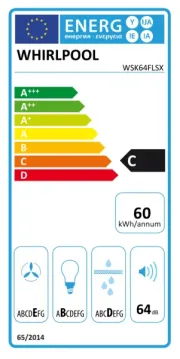
1 Juli 2025
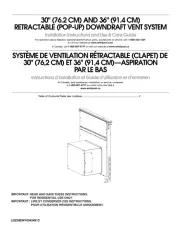
3 Juni 2025
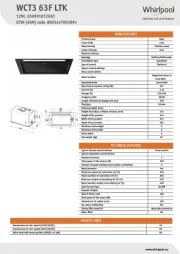
28 Maart 2025
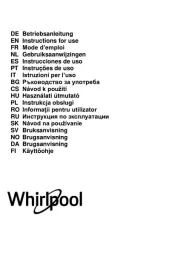
30 Januari 2025

30 Januari 2025
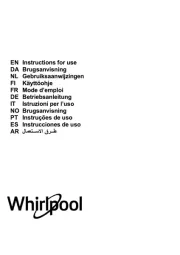
30 Januari 2025

20 November 2024

10 November 2024

22 Oktober 2024

22 Oktober 2024
Handleiding Afzuigkap
- Nodor
- DEXP
- OK
- Broan
- Freggia
- Cookology
- Cylinda
- German Pool
- AEG
- Lamona
- Inventum
- Tesy
- High One
- Ilve
- Gutmann
Nieuwste handleidingen voor Afzuigkap
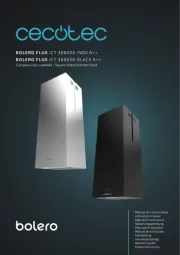
5 Augustus 2025
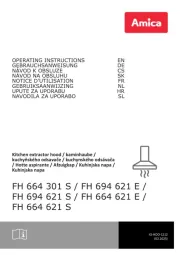
5 Augustus 2025
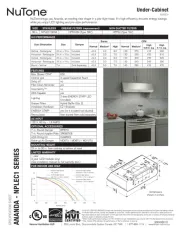
5 Augustus 2025
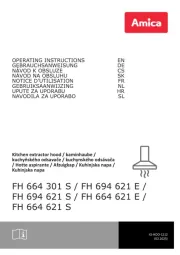
5 Augustus 2025
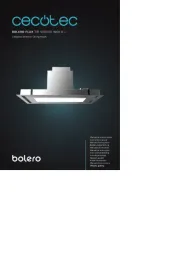
5 Augustus 2025
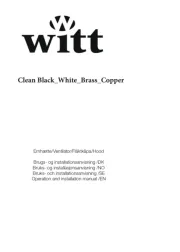
5 Augustus 2025
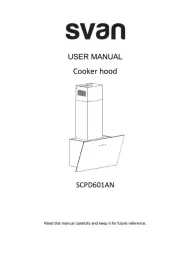
4 Augustus 2025
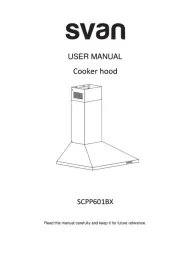
4 Augustus 2025
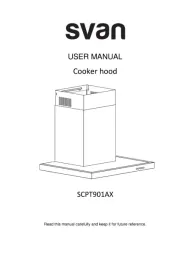
4 Augustus 2025
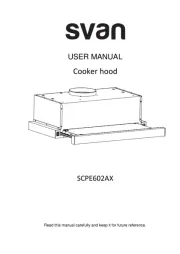
4 Augustus 2025